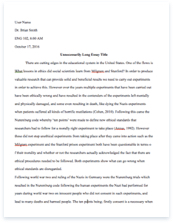”To Autumn” by John Keats

- Pages: 4
- Word count: 846
- Category: Keats
A limited time offer! Get a custom sample essay written according to your requirements urgent 3h delivery guaranteed
Order NowBoth “To Autumn” and “Amen” use natural imagery to represent the poets’ sensibility: for Keats it is the remarkable description of the harvest season that signifies a woman who cannot recognize her own individual worth and for Rossetti it is the cycle of seasons used to represent a process of reflection and getting beyond the problem. Both poems use nature as a symbol to mark the end of life; the season coming to an end characterizes a natural cycle. Keats does this by using active and passive vocabulary in the last stanza, such as “Then in wailful choir the small gnats mourn” in contrast to “Hedge – crickets sing, and now with treble soft.” Keats is sending the message that even at the end of life; we should not give up on living. This is similar to “Amen” which, in the last stanza looks towards the future. However, Rossetti shows this in the form of the poem. She extends the last stanza by two lines to emphasise the anticipation of summer. Spring is portrayed as a joyful time, and is the place where most positivity takes place in the poem.
This extension of two lines in “Amen” also connotes the theme of over-abundance with the definition of “teem” in the last line meaning ‘full’. Even so, these last two lines signify addition and emphasize overflow, which accentuates getting beyond the problem. This represents Rossetti’s feelings of conquering her depressive faze and finally understanding that the future can be better. Keats also includes the theme of over-abundance at the end of the first stanza, “warm days will never cease” gives the reader an indication of summer never ending and therefore, overflowing into autumn. This description of a season swarming into another reasonably challenges Keats’ feelings of bringing everything to an end. Keats had tuberculosis for a long period of his life and knew that he was going to die; another interpretation of “To Autumn” is one of death. Nevertheless, he talks about how “warm days will never cease” emphasising continuity and perpetuity.
Like “To Autumn”, “Amen” attempts to cope with the end of life (or the poem can be interpreted as the end of love). Where Keats’ poem can be interpreted as a description of autumn or a metaphor of his deeper feelings, Rossetti’s poem is clearly using autumn to epitomize her emotional state and for that reason, does not develop an optimistic tone. However, her poem has a tone of uncertainty, which is emphasised by the series of rhetorical questions that not only engage the reader but also weaken the reader’s understanding of the encounter that has put her into this depressive state. Rossetti continues the theme of ending by using imagery such as, “Now the wheat is garnered duly” but also uses nature to express her feelings about the “Harvest days we toiled to sow for”.
In “To Autumn”, autumn is personified as a young and beautiful woman or goddess who is often seen sitting on “a granary floor” or sleeping on “a half-reaped furrow”. She represents the beauty that is being celebrated by the speaker in the poem who still enjoys what the warmth of autumn has provided for him even though winter is impending. Keats’ Horatian ode accepts the natural world, with its mixture of “ripeness”, fulfilment, “fruitfulness” and death. Each stanza incorporates suggestions of its opposite or its predecessors, for they are innate in autumn. Yet, the description of the poem is not affected by all of these explorative suggestions.
Both poets use rhetorical questions at the beginning of stanzas. Whereas Rossetti’s suggest uncertainty and personal reflection, Keats rhetorical questions are sarcastic. Nonetheless, both poets use rhetorical questions to engage and absorb the reader into a deeper understanding of the poem. Rossetti uses stanza length to communicate the change in her attitude to the difficulties in life. Adding two lines to the final stanza signifies Rossetti’s transformation from her state of austerity in the first two stanzas to her newfound optimism in words and phrases such as, ” sun shine brightly”, “bloom” and “Roses”. “To Autumn” uses alliteration for instance, “mists and mellow” and “winnowing wind” which adds an extra syllable onto the fourth line in the second stanza and is onomatopoeic.
These uses of alliteration engage the reader and also include all of the reader’s senses within the poem. The imagery captivates a reader’s mind; therefore they are seeing the image in their head. The onomatopoeia and alliteration enthrals a reader’s hearing and the vivid description of the season has the same effect on the sense of touch and feeling.
To connect the last two lines to the rest of the last stanza, Rossetti uses the word “And” which signifies addition and consequently, addition. This emphasises her want for a average and natural life in which she feels positive and joyful whereas the last line in “To Autumn”, “And gathering swallows twitter in the skies” is an understated sense of predictable loss which makes it an accepted summation of the entire human condition.










